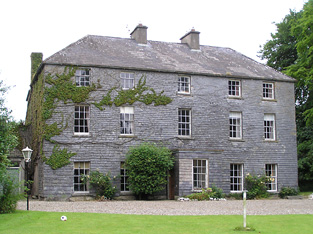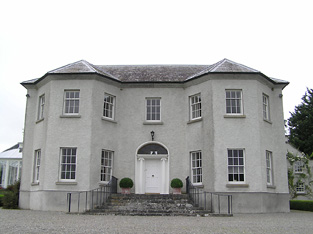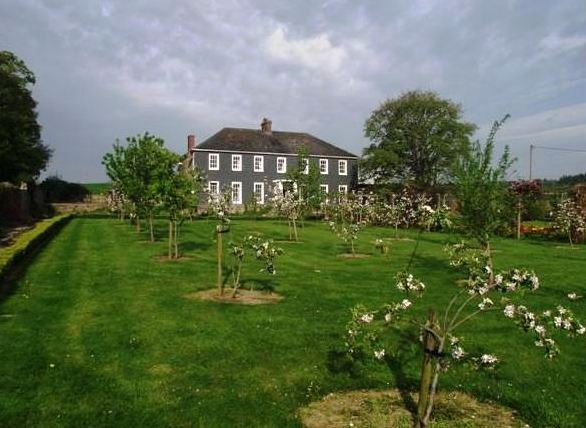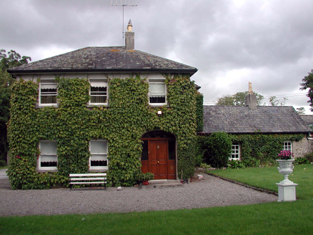Pastor Ville
Houses within 10km of this house
Displaying 27 houses.
Houses within 10km of Pastor Ville
Displaying 27 houses.
| House name | Description | |
|---|---|---|
| Knocklofty | A mainly 18th century house, cited by Wilson as the seat of John Hely Hutchinson in 1786. In 1840 the Ordnance Survey Name Books describe it as "spacious and handsome, having a fine plain front". It was valued at £70 in the mid 19th century, the seat of the Earls of Donoughmore until 1983, though Walford mentions Samuel H. Goold-Adams of Knocklofty in 1885. The Irish Tourist Association surveyor writes that Knocklofty was De Valera's headquarters for a time during the Civil War. Until recently it served as a hotel but in 2013 it was offered for sale. |

|
| Kilgrogy House | A Clutterbuck home, occupied by Thomas Clutterbuck in 1814. The Ordnance Survey Name Books refer to it as the residence of Samuel Clutterbuck in 1839 and mention that it was in bad repair. Lewis refers to it as the seat of L. Clutterbuck in 1837 and Samuel Clutterbuck was the occupier in the early 1850s. He held the property from Viscount Lismore. The buildings were valued at £14. A building is still located at this site. | |
| Marlhill | This house was the residence of Robert Prendergast in 1814. In 1840 the Ordnance Survey Name Books also record it as his residence under the slightly variant name of Marlow Hill. James Prendergast held the house valued at £12.15 shillings from the Reverend John Bagnell with 182 acres in the mid 19th century [see Bagnell entry in ''Burkes Irish Family Records'']. Home of the Rice family from the 1860s. A building still stands at this site. | |
| Monroe House | Charles Browne was occupying this house in the early 1850s. He held it from the Earl of Glengall and the buildings were valued at £10. A house and farm are still extant at the site. | |
| Corrabella | In 1840 the Ordnance Survey Name Books describe this house as "a very good building in bad repair, the residence of Miss Ann Mulcahy". It was leased to William Mulcahy by the Glengall estate and occupied by him in the mid 19th century when it was valued at £18+. A lithograph of this building is included in the sale rental of November 1853. The Mulcahys were still resident in the 1950s. This three storey house still functions as a residence. |

|
| Greenmount (Molough) | Originally the home of a branch of the Greene family of Kilmanahan. Occupied by Robert Prendergast in 1814. In 1841 the Ordnance Survey Name Books refer to it as the residence of Richard Butler Hamilton Low. It was leased by Southwell Mulcahy at the time of Griffith's Valuation, when the house was valued at £24 and held from the Reverend William Pennefather. Marked on the first Ordnance Survey map as Greenmount, this house is now known as Kenilworth House. |

|
| Burgesland House | In 1841 the Ordnance Survey Name Books refer to Burgesland House as "a gentleman's place, the residence of Thomas Mulcahy". The house was valued at £16+ in the mid 19th century. It was occupied by Thomas Mulcahy and held from Edward Pennefather. Some ruined buildings are extant at the site. | |
| Lacken | In 1840 the Ordnance Survey Name Books noted Lacken as the residence of "Pendergrass", a house in very good repair. John Mulcahy occupied the house valued at £15+ at Lacken in the mid 19th century. He held the property from William Ryan. This house is no longer lived in. |

|
| Neddans | In 1840 the Ordnance Survey Name Books note "Neddins" as the residence of Mr. Mulcahy, "a very neat house in excellent repair". At the time of Griffith's Valuation Francis Mulcahy occupied a house at Neddans valued at £21 and held from the Earl of Glengall. A farming enterprise is still located at this site. | |
| Coole | A house with a gatelodge marked on the first Ordnance Survey map and located just north of Knocklofty. Occupied by Thomas Morrissey in the mid 19th century, held from the Earl of Donoughmore and valued at £16+. A building is still extant at this location. | |
| Marlfield | Built by Colonel John Bagwell MP in the late 18th century in the Palladian style. It was the seat of the Bagwell family of Clonmel in the 19th and 20th centuries, held from the Moores of Barne and valued at almost £83 in the early 1850s. The central part of the house was burnt in 1923 and rebuilt in 1925 and is now in use as an apartment complex. |

|
| New Abbey | In 1786 Wilson refers to New-Abbey as the seat of Moore Cootee. He notes that the house was close to "the great flour mills built by the late Stephen Moore". New-Abbey was occupied by Henry Moore in the mid 19th century and held from Stephen Moore, the buildings were valued at £11.16 shillings. | |
| Salisbury | Stephen Moore is recorded as resident here in 1814 and T. Sadlier in 1837. The christian name of the mother of Stephen Moore was Salisbury. By the time of Griffith's Valuation John Bagwell held the house in fee. It was valued at £18+. Percy Gough of Salisbury, Clonmel, owned 724 acres in King's County in the 1870s. Slater refers to "Inislonagh House" as the seat of Lt-Gen. Sir Charles J. Gough in 1894. Bence Jones writes that this house was leased to J.W. Cleeve in the early 20th century and from the late 1920s to Sir David O'Brien 6th Baronet. |

|
| Bird Hill | A house located on the outskirts of Clonmel town was the residence of a member of the Taylor family in 1837. At the time of Griffith's Valuation this house valued at £10.12 shillings was occupied by Margaret Cantwell and held from Stephen Moore with 7 acres of land. This house is still in use as a residence. | |
| Ardfinnan Castle | A building that has been added too and altered since the 15th century. Occupied by James Prendergast at the the time of Griffith's Valuation, held from the Ecclesiastical Commissioners and valued at £13. In 1894 Slater notes it as a residence of Mrs. Prendergast. Still in use as a residence. |

|
| Glenabbey House | Leased from Richard Carey by Garrett R. Carey at the time of Griffith's Valuation, when it was valued at almost £8. | |
| Kilnamack | In 1849, the representatives of John Greene were leasing this property to Edward Butler when it was valued at £12 11s. Both Wilson and Taylor and Skinner had also recorded it as a residence of the Greene family in the 1780s. It is still extant and in 2013 was offered for sale. |

|
| Ardpaddin | Mary Mulcahy was leasing this property from the Earl of Stradbroke's estate in 1850, when it was valued at £10. A substantial farm is still extant at the site. | |
| Nirevale House & Mill | At the time of Griffith's Valuation, Abraham Coates was leasing this property from the Stradbrooke estate when the house and mill complex were valued at £50. Contemporary newspaper reports suggest Coates was the agent for the Stradbroke estate. In 1906 the property was part of Lord Ashtown's estate and valued at almost £24. The mill building is still extant and in use. |

|
| Ballymakee House | Edward Mulcahy was leasing this property from the Stradbroke estate at the time of Griffith's Valuation, when it was valued at £26. A substantial house overlooking the river Suir, it is still extant. | |
| Whitesfort | At the time of Griffith's Valuation John Norris was leasing this property from the Stradbroke estate when it was valued at £11. Referring to the 1770s Sadleir notes "John White, of Whitefort" who was married to a daughter of Ambrose Lane. It is not named on the 1st edition Ordnance survey map though buildings and a walled garden are visible. The ruins of some buildings remain. | |
| Suir Mount | The representatives of James Fitzpatrick were leasing this property to John Egan in 1850 when it was valued at £13 11s. The house was included in the sale of the estate in May 1850 when it was described as " a good substantial dwelling house". | |
| Ballydonagh House | Described as a steward's house at the time of Griffith's Valuation, when it was held in fee by Maria Fitzpatrick and valued at £13 9s. Labelled Ballydonagh House on the 25-inch edition of the Ordnance Survey in the 1890s. | |
| Caherbrack House | Mrs. Osborne's trustees were leasing this property to Mary Hanrahan in 1850 when it was valued at £11 10s. It is still extant and occupied. |

|
| Glasha | Phillip Lowe was leasing this property from Viscount Midleton's estate in 1850 when it was valued at almost £12. In 1783 it was noted by Taylor and Skinner as a residence of the Power family. | |
| Kilmanahan Castle | Robert Sparrow was leasing this property from the Greene estate in 1850 when it was valued at over £72. It was offered for sale as part of William Greene's estate in July and December 1852. The sale notice includes a lithograph of the castle. It was bought by Alexander Glasgow who sold it on to the Earl of Donoughmore in 1855. Earlier, in 1786, Wilson notes it as the seat of Mr. Greene. In 1837, Lewis refers to it as the seat of Lt. Col. Nuttall Greene. Hussey records Thomas Wright Watson of Kilmanahan Castle in the mid 1870s. In 1906 it was part of th Donoughmore estate and valued at £45. It is still extant. |

|
| Newcastle | Lewis writes that the only seat in the parish was the residence of S. Mulcahy. The Ordnance Survey Name Books, in 1840, mention that Newcastle House was then "in very bad repair". In the mid 19th century Miss Anne Mulcahy held the house valued at £12 from John Gordon, medical doctor, who held from the Perrys. In the 1870s William Perry is described as "of Newcastle". Elizabeth Perry occupied this house valued at £22+ in 1906. It is no longer extant. |

